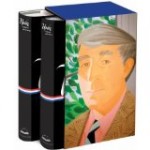Yesterday a blogger responded to Heather Havrilesky’s New York Times Magazine piece on “794 Ways in Which BuzzFeed Reminds us of Impending Death” on PottedReads, “a blog about reading and writing.”
He begins, “Having rediscovered John Updike, never having deeply read his work, until now, my late middle age, after reading Adam Begley’s new biography, Updike, I don’t seem to be able to get enough of reading his work. I can’t say for certain why. Maybe it’s the way Begley wrote Updike by braiding his work with his life that made me interested in reading him again. Maybe because Updike was a writer, first and foremost, something I’ve always wanted, which must have made his loved ones suffer. My curiosity was renewed. Updike wrote about his experience without hardly any boundaries between his life and his fiction. That’s quite a feat that some think was a trick of style, and not art, which it truly is. It also occurred to me that I wasn’t ready to read Updike until now. I probably avoided him not unlike I avoid myself by usually doing what I have to do without doing what I need to do. Updike’s not a chore, but a pleasure with a price, not unlike most good things. Yes, he created a crisis of confidence that’s anxious and distracting by making us focus on what’s important. Not pleasing others at the expense of ourselves, knowing the difference between fantasy and reality, and moving forward accordingly.”
He adds, “The beauty of Havrilesky’s essay lies not only in making me understand BuzzFeed, using Updike to do it, but by incorporating Updike’s fiction into herself so that she could tell us about how they’re connected and why. By writing this essay she made Updike hers, and translated her appreciation of his work to mine. I can’t tell where Updike finished, and Havrilesky starts. I envy her that feat. It’s Eucharistic, and what reading’s all about. Changing you from leading an everyday life into a liturgical one.
“Updike knew that about reading, and writing. That’s why he could write hard about his life. If he wrote soft, his fiction would be faithless. Instead, it’s not. Updike’s stories and novels are a modern-day spiritual reckoning. His readers don’t know where his life ends and his fiction begins. It’s intimidating because he writes so well, and painful because it’s true. It takes a mature personality to understand what Updike’s saying in such a unifying way, that you want to deny it, dismiss him, and turn away. If we don’t like it then that’s tough, and probably another reason why some critics have mistakenly judged Updike as a self-absorbed show off. He’s not. Updike aimed for transubstantiation . . . His mystery isn’t that he could turn bread and wine into the body and blood of Christ, but that he could turn our everyday lives into invincible prose, that we could own for ourselves.”
Read the full article, “Oh, what a feeling, Toyota!”


